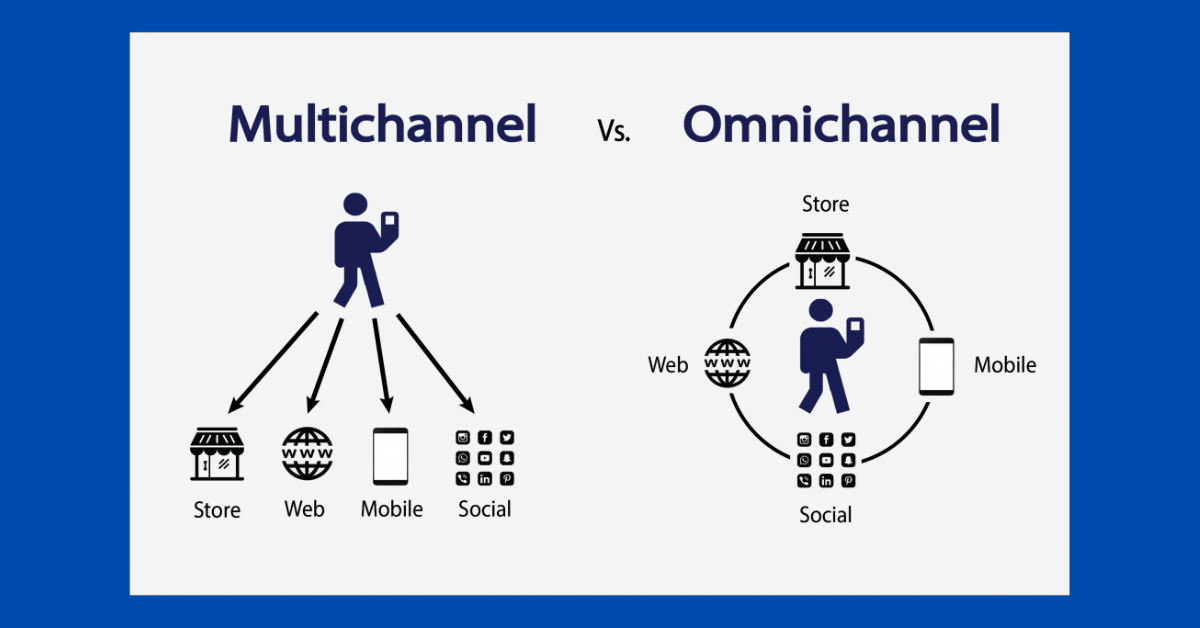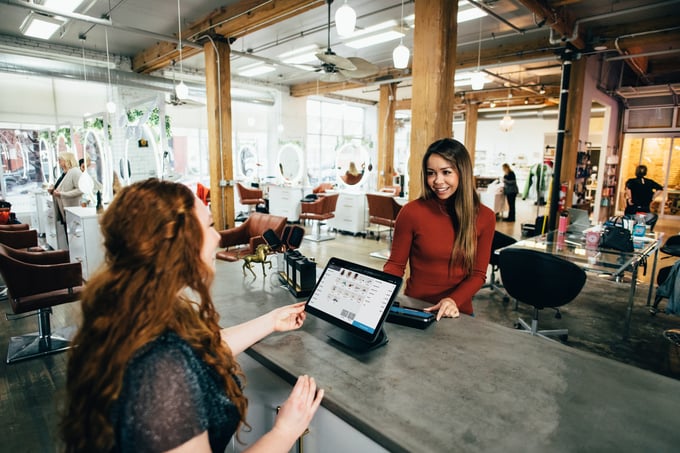“You need to come to the consumer where they are if they are going to be at grocery retailers less often,” – Jared Koerten, Euromonitor International.
One mantra rings true in today’s fast-paced, ever-evolving retail landscape, sellers are expected to, ‘meet your customers where they are’.
Imagine a favorite local bookstore that offers a cozy in-store reading corner, engages readers through an active Instagram book club, and delivers personalized reading recommendations via email. This approach is

(Image Source: NewEngland.com)
not just about selling books online or offline but creating an integrated, customer-centric experience that effortlessly blends both.
This article explains the necessity of ‘meeting customers where they are.’ The concept compels retailers to provide seamless, personalized experiences that cater to evolving consumer habits and preferences.
What Does “Meeting Customers Where They Are” Mean?
Meeting customers where they are means reaching out to them in their preferred spaces and locations, whether online, in a physical store, or through social media. It’s about understanding and adapting to their shopping habits and preferences, ensuring they can engage with your business in a way that’s most convenient and satisfying.
What Companies have adopted this approach to customer relations?
Amazon
Amazon is a prime example of a company that excels in meeting customers where they are. They’ve revolutionized retail by making online shopping incredibly convenient and fast. The retailer’s data analytics helps predict customer preferences, leading to personalized product recommendations. Amazon’s Prime service, offering fast and often free shipping, is a specific example of how they cater to the customer’s desire for quick and hassle-free delivery.
Target
Target has effectively embraced the ‘meet customers where they are’ approach, especially in integrating online and in-store experiences. They offer services like curbside pickup and same-day delivery, which cater to customers seeking convenience. Target’s mobile app, which includes features like in-store product location and the ability to shop online, is an example of how they blend digital convenience with physical shopping.
Best Buy
Best Buy has adapted to the ‘meet customers where they are’ trend by enhancing its online presence while maintaining strong in-store experiences. The company provides expert online advice and virtual product demos, meeting customers’ needs who prefer digital interaction. A specific example is their Geek Squad service, which offers online and in-store technical support and caters to diverse customer preferences for service and support.
How can Small- to medium-sized retailers adopt the “Meet Customers Where They Are” approach?
To adopt the “Meet Customers Where They Are” approach, small-to-medium-sized (SMB) retailers should first pinpoint where their customers spend most of their time. This could be on social media platforms like Instagram or Facebook, online marketplaces, or even local events in the community.
Once these key areas are identified, establishing a solid presence in these spaces is the next step. This could mean creating engaging content for social media, using targeted ads online, or actively participating in community events.
Additionally, these retailers can offer flexible shopping options such as online ordering with the option to pick up in-store. Providing customer service through various channels like chat, email, and phone can also be very effective.
Personalizing the shopping experience using customer data can make a big difference. By implementing these strategies, retailers can create a more accessible and tailored shopping experience that meets their customers’ needs and preferences.
“A study conducted by Accenture found that, businesses that utilize chatbots and AI-powered messaging platforms report an increase in customer satisfaction and loyalty, as well as a reduction in customer service costs.” (Source: Accenture)
What Questions Do Retailers Need to Ask to Locate Customers?
Small-to-medium-sized retailers can gain valuable insights into their customers’ preferences and behaviors by asking and answering these questions:
Where do our customers spend most of their time online?
This question helps identify the key digital platforms where customers are active, such as social media, online forums, or shopping websites. Understanding this allows retailers to focus their online presence and marketing efforts effectively.
What are our customers’ primary shopping habits and preferences?
Retailers must analyze purchasing history and customer feedback to better understand what products and services their customers prefer. This information is crucial for tailoring inventory levels, planning promotions, and marketing strategies.
How do our customers prefer to be contacted and receive information?
Understanding whether customers prefer email, social media, text messages, or phone calls for communication helps create effective and personalized marketing campaigns.
What are our customers’ common pain points or challenges during their shopping journey?
Identifying challenges such as website navigation difficulties, payment issues, or product availability can help retailers improve the customer experience.
How effective are our current marketing and promotional strategies in reaching our target audience?
Tracking metrics like email open rates, social media engagement, and conversion rates from various marketing campaigns helps evaluate and adjust marketing strategies for better reach and results.
Are we effectively using customer feedback to improve our services and product offerings?
Collecting and analyzing customer feedback is critical for making necessary adjustments to products, services, and customer experiences, ensuring that the business evolves according to customer needs and preferences.

(Image Source: Demeter)
The responses to these questions provides information that allows retailers to tailor their strategies effectively to Meet Customers Where They Are.
Tips to Help Meet Customers Where They Are
The trend towards “meeting customers where they are” focuses on delivering shopping convenience, personalization, and flexibility. Consider the following tips:
Leverage Social Media Platforms
Identify your customers’ social media channels and establish an active presence there. Regularly post engaging content, respond to comments, and use these platforms for promotions and customer service.
Optimize for Mobile
Ensure that your website and online store are mobile-friendly. With many consumers shopping on smartphones, this signals that a seamless mobile experience is essential.
Utilize Email Marketing Effectively
Segment your email list based on customer preferences and behaviors. Send personalized offerings and updates to keep customers engaged and informed about your products or services.
Offer Flexible Shopping Options
Introduce or enhance services like online ordering with in-store pickup, home delivery, and easy return policies. This flexibility caters to various customer preferences and enhances convenience.
Gather and Act on Customer Feedback
Regularly collect feedback through surveys, social media, or direct communication. Use this information to refine your products, services, and customer experience, showing your customers that their opinions are valued and acted upon.

(Source: TopDown Systems)
Remember: The underlying concept recognizes the unique preferences of individual customers, aiming to provide seamless experiences across all platforms, whether online, in-store, or on social media.
“The shopper wants to shop when they want, how they want, and where they want. It all starts with a search, and it’s our goal to make sure they can find whatever it is they want.” – Brian Kavanagh, The Hershey Company.
Conclusion
The future of retail lies in a customer-centric approach that “meets customers where they are .” Leveraging technology, analyzing customer data, and maintaining a solid presence across marketing platforms enables retailers to create personalized, seamless shopping experiences. Thus, it is crucial to gather and act on customer feedback, continuously refining products and services to meet evolving customer preferences.
Thank you for reading our article!
TimeWellScheduled is a secure online time and attendance software that is 100% tailored to meet your scheduling needs! In addition, our cloud-based scheduling solution optimizes employee attendance tracking, simplifies payroll administration, and enhances staff management capabilities. Plus, our service is free for up to 10 employees!
Click here to download our (Excel) employee scheduling template; It’s FREE!






